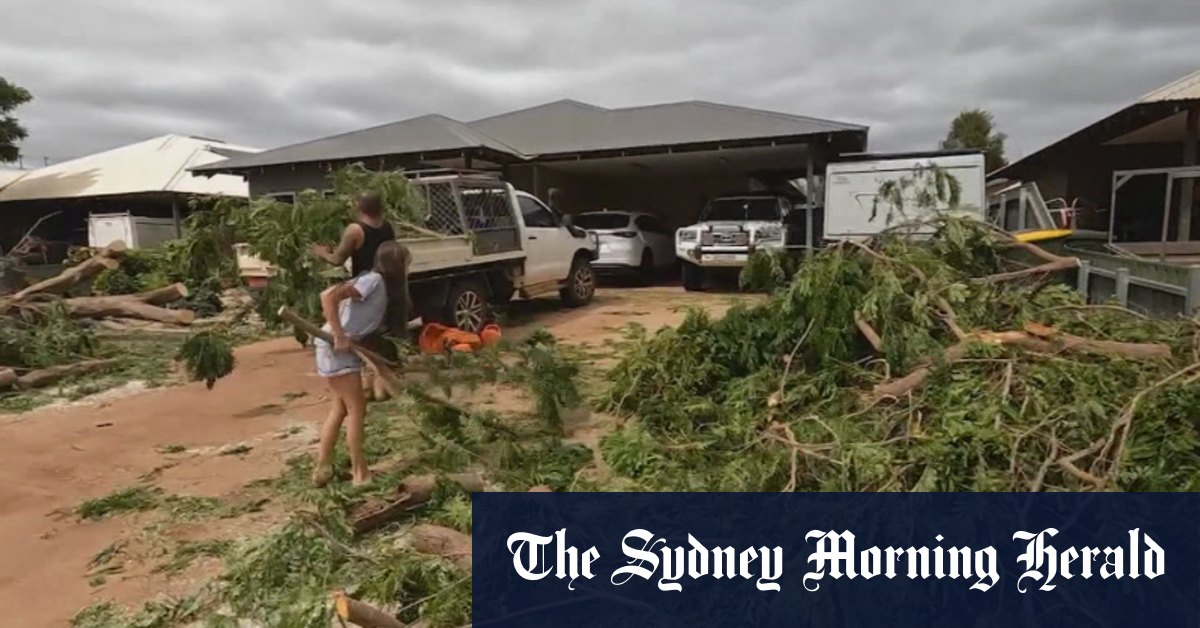Australia
Stranded Indigenous community evacuated following ex-tropical cyclone

Stranded Indigenous Community Evacuated Following Ex-Tropical Cyclone Zelia
An Indigenous community in Australia was recently forced to evacuate after being stranded by floodwaters caused by ex-Tropical Cyclone Zelia. The extreme weather event brought heavy rainfall and strong winds, leading to rising floodwaters that isolated the community. Emergency services and local authorities quickly sprang into action, organizing a rescue operation to ensure the safety of all residents. The evacuation was carried out with careful coordination, prioritizing the well-being of the community members, especially the elderly, young children, and those with special needs. This incident highlights the vulnerability of remote Indigenous communities to extreme weather events and the importance of timely interventions to protect lives.
The Impact of Ex-Tropical Cyclone Zelia
Ex-Tropical Cyclone Zelia made landfall in Australia, bringing with it the remnants of a powerful storm system. Although it had weakened from its peak as a tropical cyclone, the storm still caused significant damage and disruption. Heavy rainfall overwhelmed local waterways, leading to flash flooding in several areas. The Indigenous community, located in a remote region, was particularly hard hit, as the floodwaters surrounded their homes and cut off access to essential supplies. The community’s isolation made it challenging for emergency services to reach them, but thankfully, the evacuation was successful, and no lives were lost. The incident serves as a stark reminder of the increasing frequency and intensity of extreme weather events, which disproportionately affect vulnerable populations.
The Evacuation Process: A Race Against Time
The evacuation of the stranded Indigenous community was a complex and delicate operation. Emergency responders, including search and rescue teams, worked tirelessly to reach the community before the floodwaters rose further. The operation involved air and land resources, with helicopters and boats being used to ferry residents to safety. The community members were taken to temporary shelters in nearby towns, where they received food, water, and medical care. Despite the challenges posed by the remote location and harsh weather conditions, the evacuation was carried out with precision and care. The success of the operation was a testament to the bravery and determination of the rescue teams and the resilience of the Indigenous community.
Challenges Faced by the Community
The Indigenous community faced numerous challenges in the aftermath of the flooding. Many residents lost their homes and belongings, and the disruption to their lives was significant. The emotional toll of being displaced from their ancestral lands was immense, as the community has deep cultural and spiritual ties to the area. Additionally, the temporary shelters posed their own set of challenges, including overcrowding and limited access to essential services. However, the community came together to support one another, sharing resources and offering emotional support during this difficult time. The resilience and solidarity displayed by the community are a beacon of hope and strength in the face of adversity.
A Call for Climate Action and Support
The flooding caused by ex-Tropical Cyclone Zelia is part of a larger pattern of extreme weather events that are becoming more frequent and severe due to climate change. Indigenous communities, who have lived in harmony with the land for generations, are often the most vulnerable to these changes. The evacuation of the stranded community highlights the urgent need for climate action and increased support for vulnerable populations. Governments, organizations, and individuals must work together to provide resources and infrastructure that can help these communities adapt to the changing climate and recover from disasters. By prioritizing the needs of Indigenous communities, we can ensure that they are not left behind in the face of climate change.
Hope and Resilience: Looking to the Future
Despite the challenges they face, the Indigenous community remains hopeful and determined. The evacuation was a difficult experience, but it also demonstrated the strength and unity of the community. As they begin the process of rebuilding and recovering, there is a renewed focus on preserving their culture and traditions while adapting to the realities of a changing world. The resilience of the community is a source of inspiration, and their story serves as a reminder of the importance of standing together in the face of adversity. With the right support and resources, the community can not only recover but thrive, ensuring that their rich cultural heritage is preserved for future generations.











